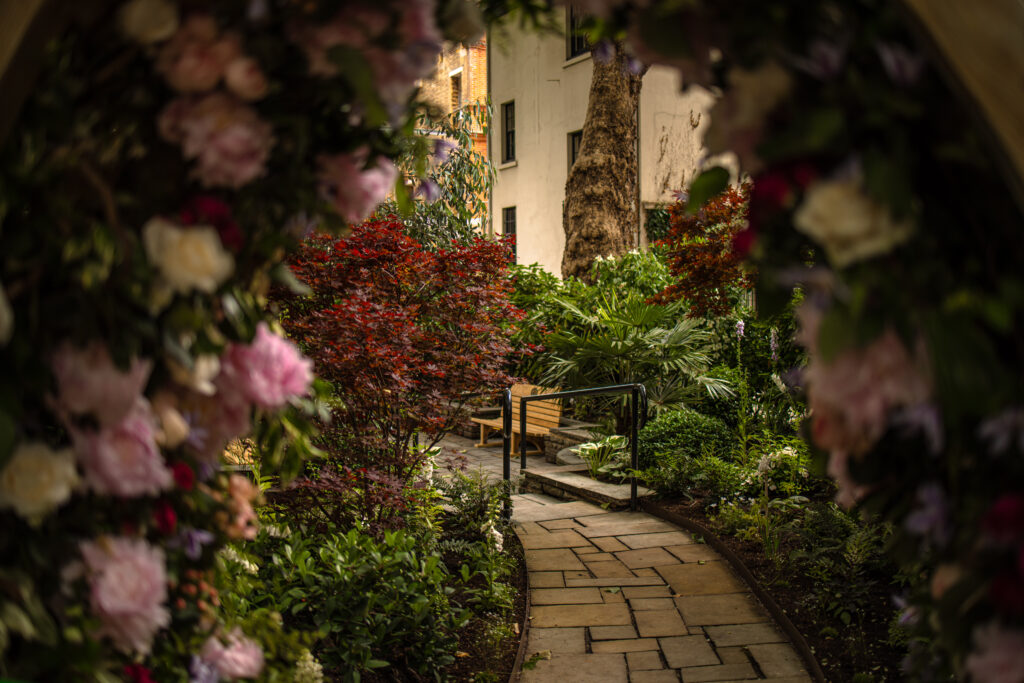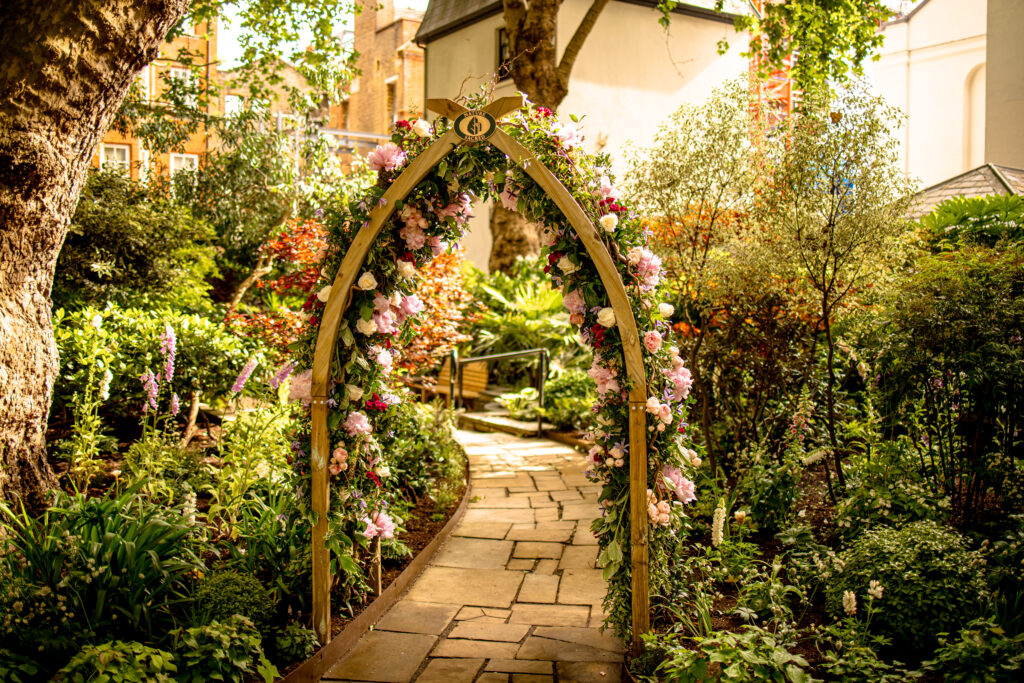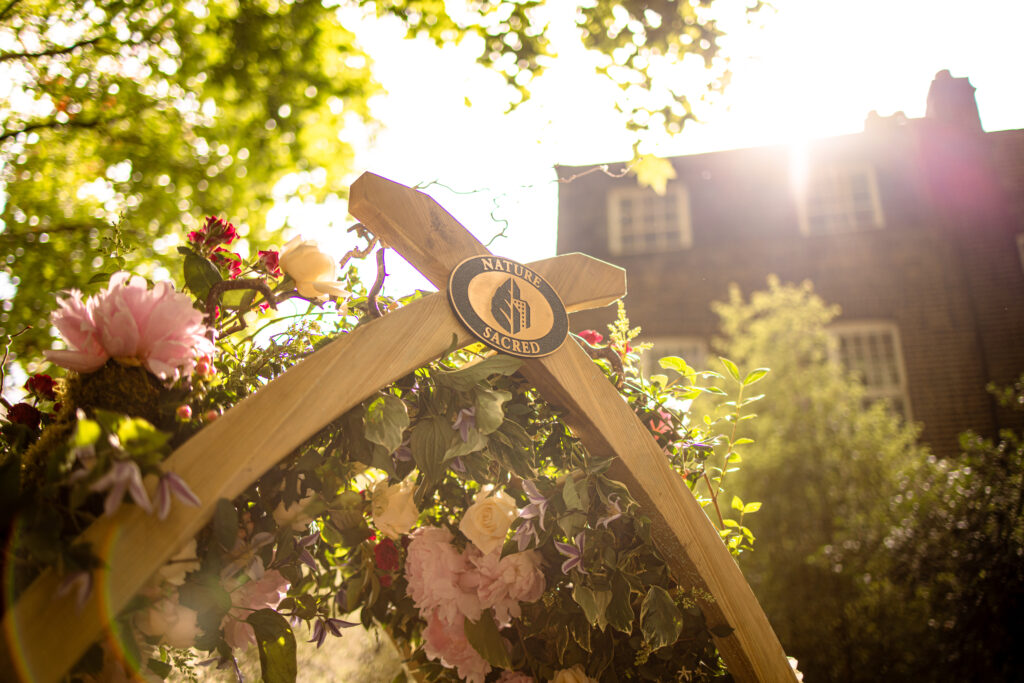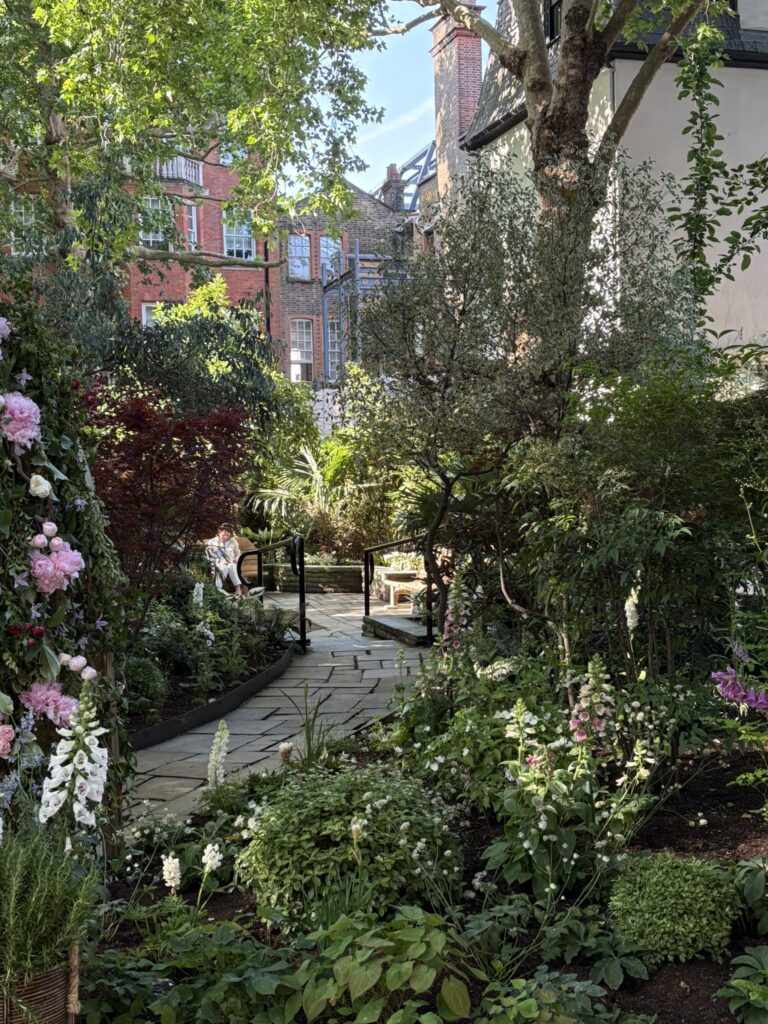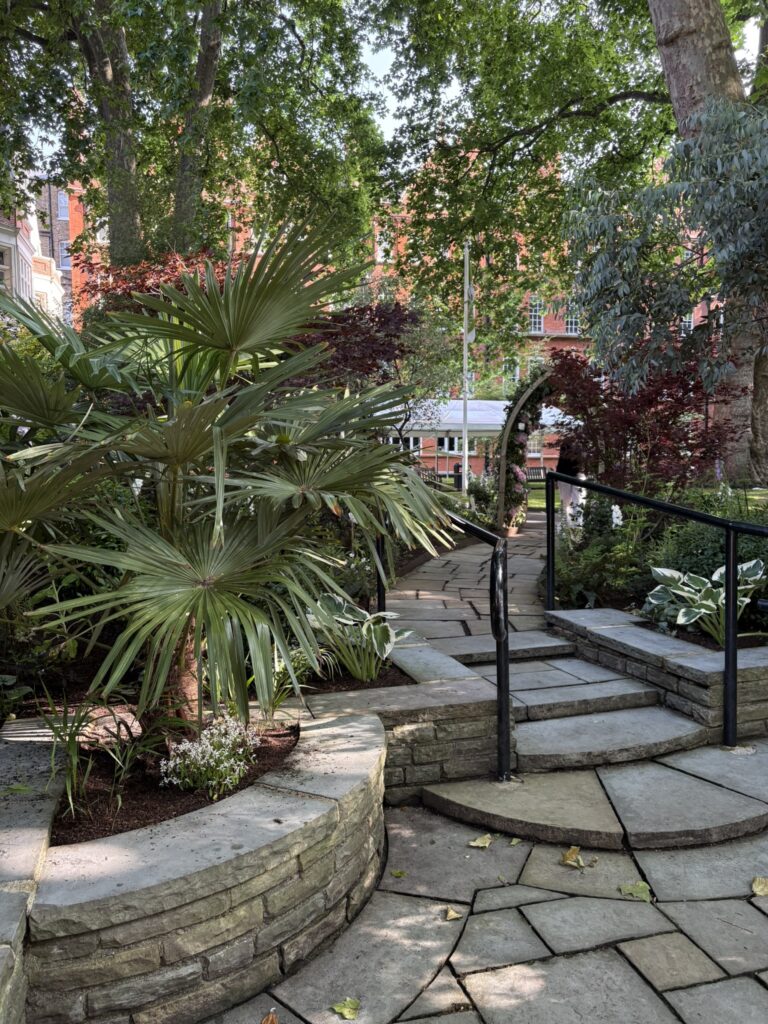About this Sacred Place
Mount Street Gardens began life as a burial ground for the nearby Church of St. George’s Hanover Square, built between 1921 and 1925, as there was no room for an adjacent plot on the site. The Grosvenor Estate sold the land for well under its potential value at £315 in 1723. The graveyard filled up by 1762, at which point another burial ground was appointed near Tyburn, now on the Bayswater Road. Eventually, after the Burial Act of 1854 pushed graveyards out of the centre of London, the church’s burial ground was moved to Hanwell, which became the City of Westminster burial ground in 1889.
On the north side of the burial ground, the parish workhouse was built in 1725-1726 which was operational until the mid 1870s, when several new workhouses were developed in the parish. Its demolition and redevelopment in 1886 were overseen by architects Sir Ernest George and Harold Peto, with the Terracotta blocks built to imitate fashionable “Dutch Style” canal houses.
The public gardens were developed from 1889-1890, realising a long-held ideal of the First Duke of Westminster, who personally paid £100 annually for the upkeep of the gardens until his death in 1899. The gardens have known many names through the years, firstly appearing on maps as St George’s Hannover Square Burial Ground, then Vestry Hall Gardens and St Georges’ Hanover Square Gardens, before becoming Mount Street Gardens as they are today.
During the Second World War, four bombs struck the area around the gardens. Between October 1940 and May 1941, several houses around the park were damaged, including the Mayfair telephone exchange which backed onto the gardens. On 11 May 1941 a final bomb landed in the centre of the gardens, directly onto the old graveyard. There were no casualties resulting from any of the strikes.
Despite its colourful and sometimes dark history, the gardens have maintained a sense of calm and tranquillity. In 1892, local historian George Clinch described the gardens as “a beautifully quiet and secluded area, almost entirely enclosed by tall houses, well wooded with a profusion of trees and ornamented with some borders of old-fashioned flowers’: The preservation of this atmosphere to this day, despite the transformation of the area, has been largely down to the work and care of the local community.
Mount Street Gardens multi-century legacy underpins the importance that this space has to the Mayfair community. Nature Sacred became involved in early 2025 with the installation of 3 signature benches. Our very first international Sacred Place, Mount Street Gardens is a one of a kind space and not only reflects the deep history in this section of London, it is an embedded space of culture, community, connection, and healing in nature for generations to come.

